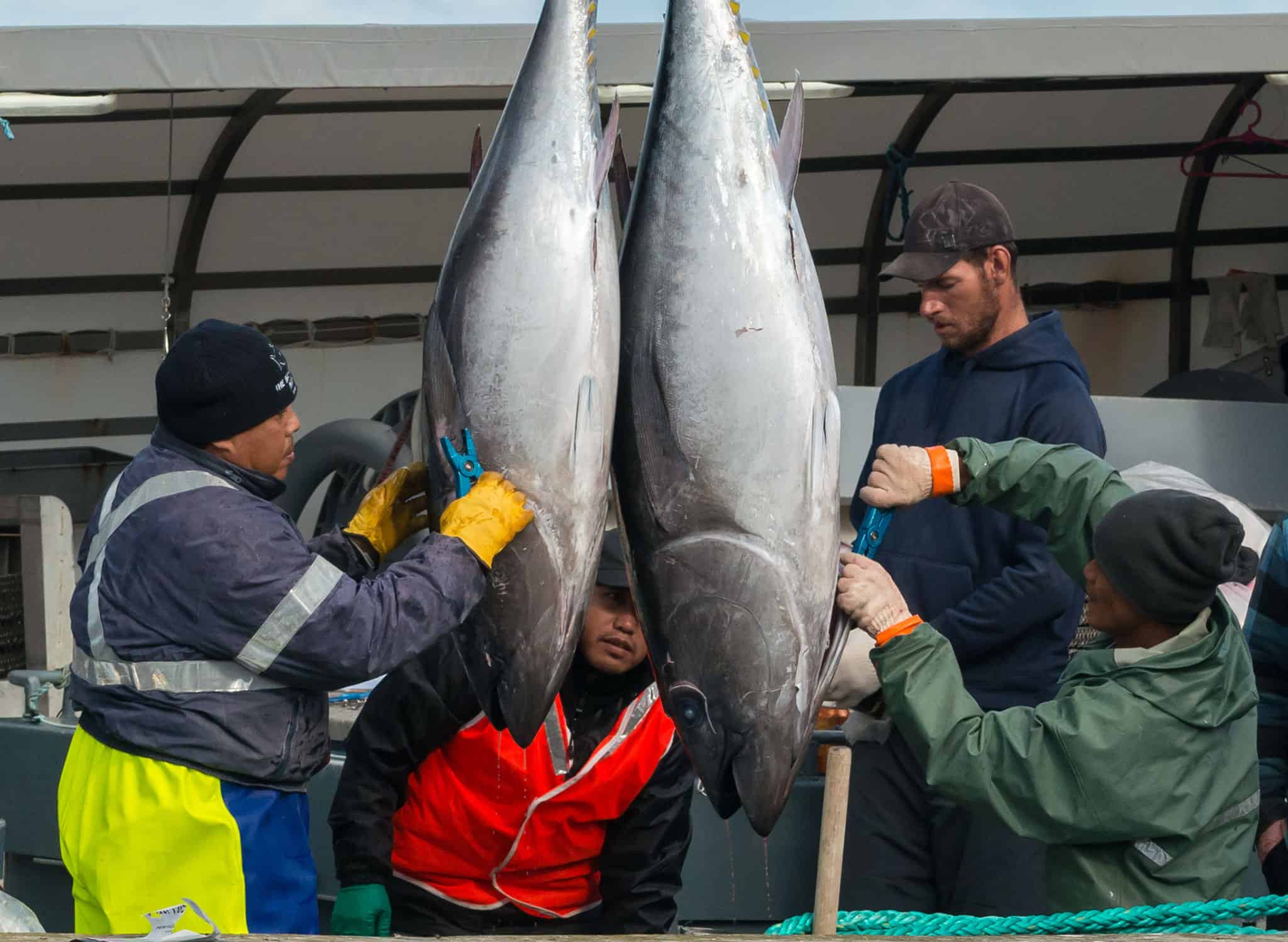“A disgrace”: Queensland Fisheries fails basic fishery management
In deeply disturbing news for the tuna longline industry, Queensland Fisheries have pushed ahead with an ill-conceived plan, deploying sub-surface fish aggregating devices (FADs) in Commonwealth waters adjacent to the Southeast Queensland coast. These FADs are part of an array stretching for 150 kms, located 50-60 kilometres from shore.
A FAD is a human-made structure set adrift or anchored in the otherwise open sea. The structure attracts small bait fish that subsequently draws in larger predatory fish.
Queensland Fisheries proposed this FAD array to take the fishing pressure off seasonal snapper and pearl perch and transfer the pressure to mahi mahi and tunas.
“This is a disgrace,” stated David Ellis, CEO of Tuna Australia, the industry body representing commercial tuna longline fishers. “These FADs will tangle and destroy our fishing equipment.
“Despite the worldwide trend to remove FADs from oceans, Queensland Fisheries has installed a FAD network and effectively removed a very significant fishing area from tuna fishing companies. This area is worth AUD$10m annually and supports real jobs,” he said.
Given the impact of COVID, it is really baffling why the Queensland Government pulled a stunt like this.”
Pavo Walker, owner of Walker Seafoods Australia in Mooloolaba: “Effectively we have been shut out of our normal fishing areas by the Queensland Government. We will now have to reduce staff numbers to compensate for the reduction in catches.
“This belligerent decision by the Queensland Government will only benefit a small number of large private game fishing vessels’ recreational activities, is poorly timed and is a totally ill-informed waste of taxpayers’ money,” said Walker.

Ellis said that Tuna Australia and its members have actively engaged with Queensland Fisheries over the last 12 months to develop a FAD program that works for everyone.
“We recommended that FADs be placed in water depths of up to 150m and on hard bottom,” he said.
“This is a ‘win-win’ for everyone as the FADs would attract tuna and mahi mahi, are closer to shore thereby providing safe access for all recreational fishers, and would not interfere with any commercial fishers.”
Adam Whan, managing director of 4 Seas in Mooloolaba: “We are not against recreational fishing, in fact a lot of us go recreational fishing on our days off.
If fish stocks are in trouble, then using FADs is a very bad option for fishery management. Queensland Fisheries needs to look at sound fishery management options for the sustainability of fish stocks.”
In fact, Queensland Fisheries were running a hidden agenda that was revealed very late in the planning stage with the main focus of the FADs being to attract blue marlin.
During discussions with the Queensland Government, Tuna Australia was assured they would be informed of the government’s intentions. Instead, a letter was received dated 2 March 2021 stating that QLD Fisheries would be deploying FADs on the proposed locations between 25-27 February 2021.
“These sub-surface FADs have been deployed to appease tournament and game fishers,” said Ellis.
“Fundamentally, the pressure still remains on threatened seasonal snapper and pearl perch. Meanwhile, the ‘big end of town’ enjoys comfort fishing, and FADs make it easy for them to catch blue marlin.
“This is to the detriment of ‘mum and dad’ anglers with small boats who will struggle to safely access the FADs given they are 50-60 kilometres from shore,” he said.
The design of the Queensland Fisheries FAD network is less than desirable and is based on siting FADs in low current areas.
“We were presented with information about FAD trials in New Caledonia where the currents are benign and are installed next to coral reef areas,” said Todd Abbott, a third-generation longline fisherman.
“This system will not work where they have been installed.
This is AUD$1 million of wasted Queensland taxpayer money that will not last long, and then who is responsible for removing the FADs from the water when they break free or lose their floats and add to marine debris?”
The Commonwealth Fishers Association (CFA), the peak body representing commercial fishing industries, has sought cooperation with all Australian State fisheries agencies to address the FAD issue.
Andrew Sullivan, Executive Officer of the CFA said, “we have no idea of the impacts of these FADs on target and non-target fish and how they affect the sharing of catch between different user groups and resource sustainability.”
The CFA is seeking the support of state fisheries agencies to investigate issues associated with FADs and has requested a moratorium on the deployment of new FADs until they can be assessed. Despite this request, the QLD Government has pushed ahead and deployed more FADs while the issue is being considered.
Summary
- Queensland Fisheries has installed a new FAD network 50–60 km off the Southeast Queensland coast as a management tool for exploited seasonal snapper and pearl perch stocks
- The implementation of FADs is a bad fisheries resource management tool
- The 150-km stretch where the FADs are installed is worth AUD$10 million annually for regional areas in Queensland
- The FAD network removes a very significant fishing area from tuna producers and will result in job losses
- The FAD network only suits ‘top-end’ game and tournament fishers and disadvantages ‘mum and dad’ recreational fishers
- There needs to be greater transparency on the implementation of FADs including environmental risk assessments
- Fish that are being targeted are from Commonwealth-managed fisheries. There need to be clear guidelines on how many fish are being caught consistent with the national policy of resource sharing
- Tuna fishers need to be compensated for the loss of fishing area and catch